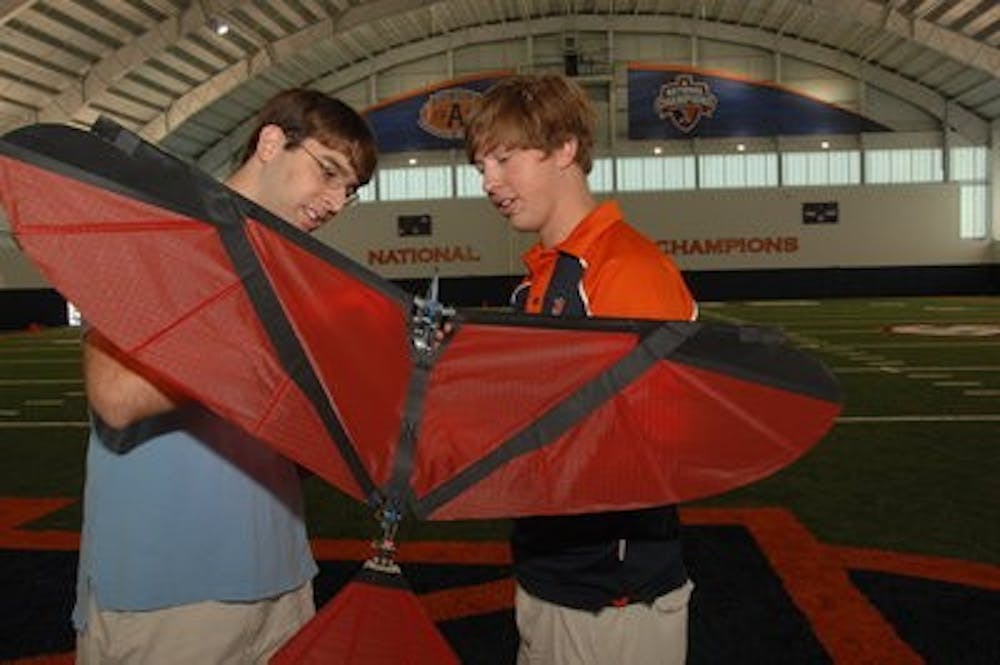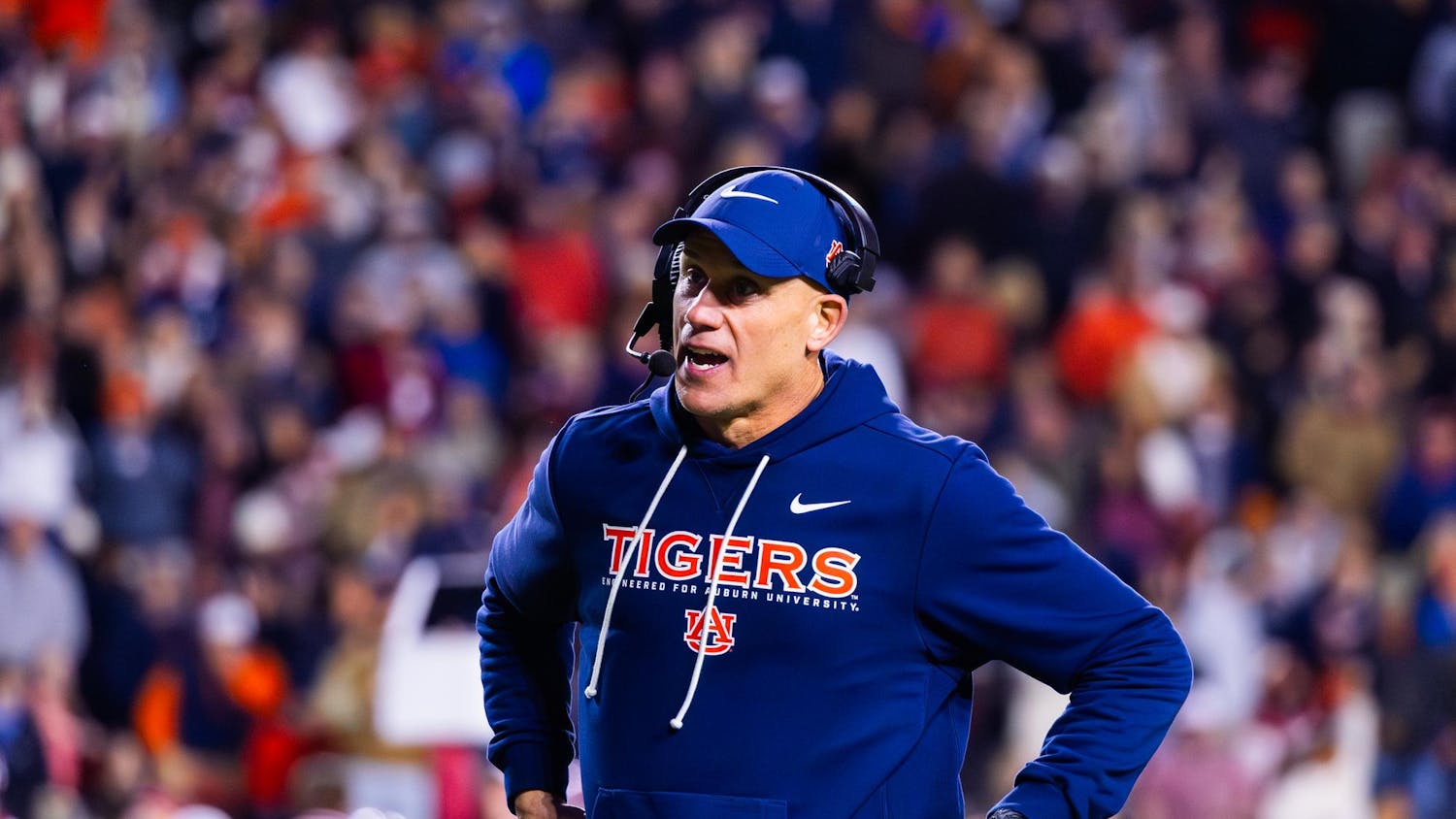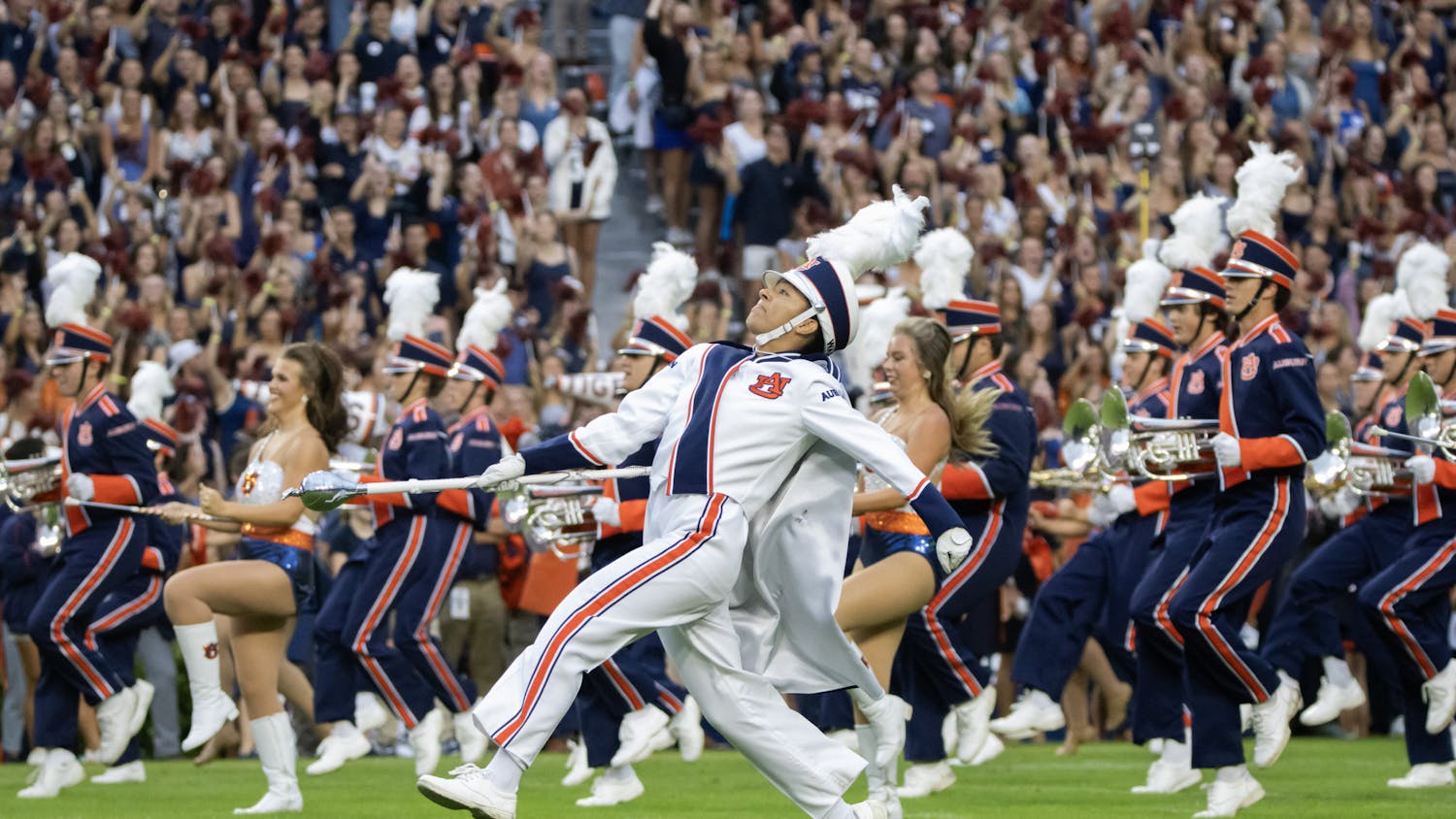Rumor has it a new bird might be stealing beloved eagles Nova and Spirit's limelight on gamedays--a bird that is more predictable and obedient.
Resurrected by Jarred Beck and Brian Pappas, seniors in electrical and computer engineering, and graduate student Emile Ewing, "Robo-Nova" was rescued from storage after a summer cleanup of Broun Hall's electrical engineering lab.
Originally constructed as a senior design project in fall 2009, the mechanized ornithopter was initially designed to mimic a cardinal, not an eagle.
Charlie Stringfellow, Auburn alumnus in electrical and computer engineering, was the first to propose the idea of a robotic cardinal, mimicking the mascot of Ball State University.
"He and his wife wanted to support some student projects," said Thaddeus Roppel, associate professor in electrical engineering. "He said, 'My wife is an alumna of Ball State and their mascot is a cardinal.' He said if we could make a bird like an eagle, except make it look like a cardinal, then that would be something of interest."
Although the request seemed a bit unusual at the time, generous funding by Stringfellow allowed for the project. That semester, two groups of students produced a pair of well-crafted machines. Robo-Nova remains in Broun, while the other was given to the Stringfellows as a gift.
Similar to the workings of a radio-controlled model airplane, Robo-Nova operates via a rechargeable battery and joystick. Using altered parts purchased from a store-bought kit, the creation features a lightweight carbon-fiber frame and a nylon skin.
"We definitely looked at the possibilities of how to make an eagle from scratch," Pappas said. "We've looked at different materials and done a little research into the true movements of how a bird actually moves. This one does flap its wings, but it's very simplified to how a bird moves."
On a fully charged battery, Robo-Nova can remain airborne for up to 10 minutes.
"They originally built them with a wireless camera," Beck said of earlier prototypes. "I think the bird had GPS on it so you could tell it where to fly."
However, Robo-Nova has shortcomings which keep it from competing with Spirit and Nova. In the machine's current state, the strong wind currents present in the stadium would be too much for the robotic counterpart to withstand.
"With this particular bird, wind is very bad for it," Beck said. "It's really hard to control it even if there's a slight breeze. That's something that would be considered if there was a future version.
"It would have to be heavy enough and have enough controls to counteract for that. Safety would be a major concern when you let one of these go around all 87,451 of your favorite friends."
Though chances are slim that Robo-Nova will soon replace Auburn's cherished War Eagles, it's still possible the ornithopter could serve another purpose.
"A robotic one--if the controls were right--could fly in the arena or something like that," Beck said, "something smaller where you couldn't really bring an actual eagle in."
Robo-Nova could also be a reliable substitute when conditions aren't favorable for Spirit or Nova.
"If it becomes a problem where they can't fly, at least there would be a backup or something we could demo outside or in more hectic environments where you couldn't actually bring the eagle out," Beck said.
Those involved hope to see more lifelike features on the next model, assuming they are able to find the time and funding.
"We're talking a lot about how they fly is related to the feathers, so we were hoping to keep it a traditional eagle shape," Beck said. "Eagles fly really well, so it gives a really good blueprint as something to work toward for mechanical models."
A prototype worthy of replacing Auburn's eagles could be designed and built in as soon as one to two years.
"We are exploring options of building our own prototype that could actually do that," Beck said. "I don't know at what stage we are now, but there have been thoughts. Hopefully, the next one will have a little more intelligence to itself to help it stay in the air."
Do you like this story? The Plainsman doesn't accept money from tuition or student fees, and we don't charge a subscription fee. But you can donate to support The Plainsman.





